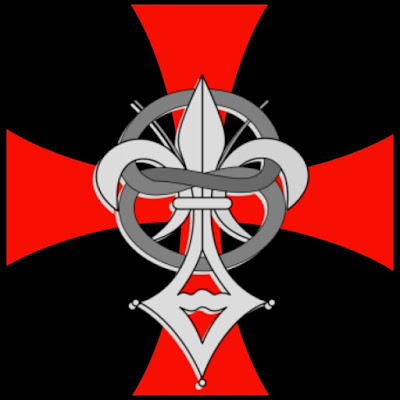Prieure de Sion ('Priory of Sion') and The Knights Templar
Prieure de Sion ('Priory of Sion') and The Knights Templar
" 1) There was a secret order behind the Knights Templar, which created the Templars as its military and administrative arm. This order, which has functioned under a variety of names, is most frequently known as the Prieure de Sion ('Priory of Sion').
2) The Prieure de Sion has been directed by a sequence of Grand Masters whose names are among the most illustrious in Western history and culture.
3) Although the Knights Templar were destroyed and dissolved between 1307 and 1314, the Prieure de Sion remained unscathed.
Although itself periodically torn by internecine and factional strife, it has continued to function through the centuries. Acting in the shadows, behind the scenes, it has orchestrated certain of the critical events in Western history.
4) The Prieure de Sion exists today and is still operative. It is influential and plays a role in high-level international affairs, as well as in the domestic affairs of certain European countries. To some significant extent it is responsible for the body of information disseminated since 1956.
5) The avowed and declared objective of the Prieure de Sion is the restoration of the Merovingian dynasty and bloodline - to the throne not only of France, but to the thrones of other European nations as well.
6) The restoration of the Merovingian dynasty is sanctioned and justifiable, both legally and morally. Although deposed in the eighth century, the Merovingian bloodline did not become extinct. On the contrary it perpetuated itself in a direct line from Dagobert II and his son, Sigisbert IV. By dint of dynastic alliances and intermarriages, this line came to include Godfroi de Bouillon, who captured Jerusalem in 1099, and various other noble and royal families, past and present - Blanchefort, Gisors, Saint-Clair (Sinclair in England), Montesquiou, Montpezat, Poher, Lusignan, Plantard and Habsburg-Lorraine. At present, the Merovingian bloodline enjoys a legitimate claim to its rightful heritage."- The Holy Blood and the Holy Grail Michael Baigent, Richard Leigh and Henry Lincoln Pg. 91-92
" The text in the Dossiers secrets goes on to refer to the Order of the Temple. The founders of the Temple are specifically listed as, 'Hugues de Payen, Bisol de St. Omer and Hugues, Comte de Champagne, along with certain members of the Ordre de Sion, Andre de Montbard, Archambaud de SaintAignan, Nivard de Montdidier, Gondemar and Rossal'."- The Holy Blood and the Holy Grail Michael Baigent, Richard Leigh and Henry Lincoln Pg. 99
"It is therefore possible that the Knights Templar were active, albeit in an ex officio capacity, long before 1118 - as, say, a military or administrative arm of the Ordre de Sion, housed in its fortified abbey." - The Holy Blood and the Holy Grail Michael Baigent, Richard Leigh and Henry Lincoln Pg. 100
"By 1114 the Knights Templar are already active, perhaps as the Ordre de Sion's armed entourage; but their constitution is not negotiated until 1117, and they themselves are not made public until the following year." - The Holy Blood and the Holy Grail Michael Baigent, Richard Leigh and Henry Lincoln Pg. 101
" In 1188 a formal separation supposedly occurred between the two institutions. The Ordre de Sion, which had created the Knights Templar, now washed its hands of its celebrated proteges. The 'parent', in other words, officially disowned the 'child'. This rupture is said to have been commemorated by a ritual or ceremony of some sort. In the Dossiers secrets and other 'Prieure documents', it is referred to as 'the cutting of the elm', and allegedly took place at Gisors." - The Holy Blood and the Holy Grail Michael Baigent, Richard Leigh and Henry Lincoln Pg. 103
" Until 1188 the Ordre de Sion and the Order of the Temple are said to have shared the same Grand Master. Hugues de Payen and Bertrand de Blanchefort, for example, would thus have presided over both institutions simultaneously. Commencing in 1188, however, after the 'cutting of the elm', the Ordre de Sion reportedly selected its own Grand Master, who had no connection with the Temple. The first such Grand Master, according to the 'Prieure documents', was Jean de Gisors. In 1188 the Ordre de Sion is also said to have modified its name, adopting the one which has allegedly obtained to the present - the Prieure de Sion." The Holy Blood and the Holy Grail Michael Baigent, Richard Leigh and Henry Lincoln Pg.105




Comments
Post a Comment